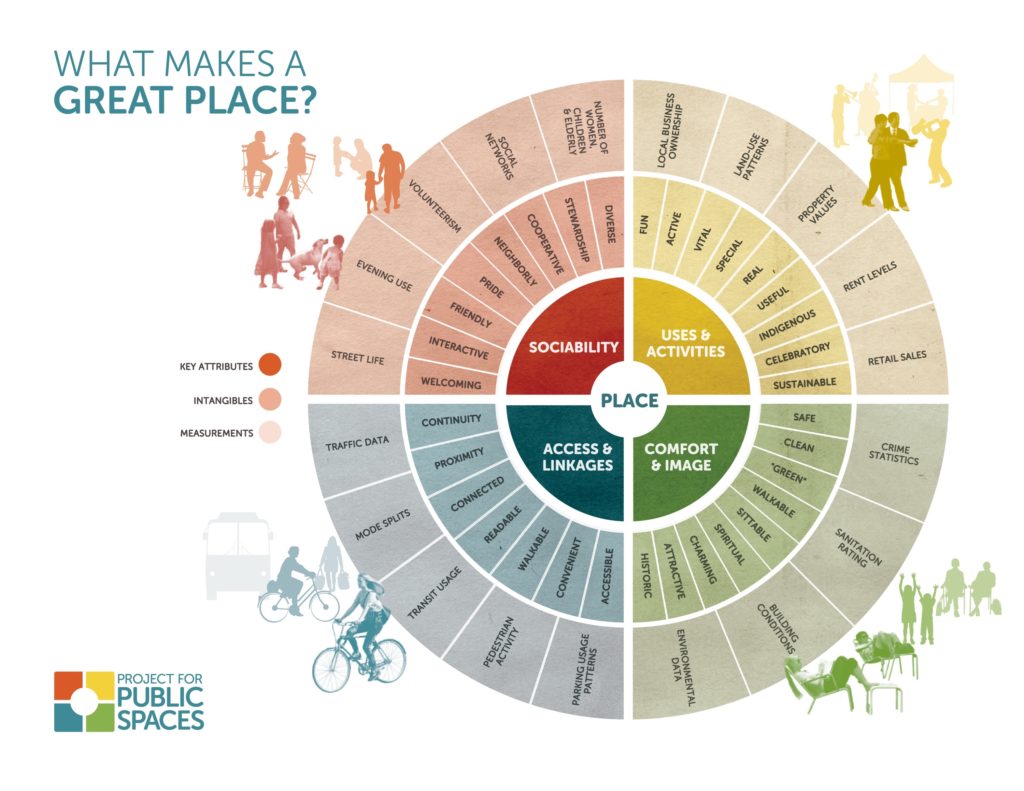Nowadays coliving enthusiasts and professionals are attempting to define what coliving is according to their model and their understanding of the current market and future potentials.
At Conscious Coliving, coliving consultants, we’re no different, and we’ve come up with a Manifesto to enable more sustainable and human-centered coliving.
We also just wrote an article with Gui Perdrix from Art of Co (formerly known as Coliving Diaries) about the future of the coliving sector and where we feel the industry is heading.
Why are gathering around this subject? In all honesty, out of a slight frustration.
In the last weeks, we read a few articles which we felt did not represent the full potential of where the market is heading.
For example, Forbes released an article in March describing their very own ‘Coliving 2.0’ movement with examples such as Node and The Collective later on took over the 2.0 term when announcing the launch of their Canary Wharf location.

Angelica Kyrstle Donati, the Forbes contributor behind the article, explains ‘Coliving 2.0’ as an offer that is “targeting a slightly older demographic that desires a strong sense of community and a curated offering, but also wants significantly more living space than that afforded by micro-living products”.
In Forbes’ point of view, the next step to the current coliving model of targeting young professionals out of college with micro-housing opportunities will be replaced with targeting a wider demographic and allowing more living space.
Although this is a step forward and that Node is contributing to forward-thinking work in the coliving industry, the full potential of coliving initiatives can go way beyond this ‘Coliving 2.0’ model. In order for coliving to blossom as an all-inclusive and wide-spread movement, the industry will have to adapt at more forefronts than simply demographics, architecture and what Curbed calls an ‘apartment amenity arms race’.
A Conversation on "Coliving 3.0"
So with Gui, we sat down to share our ideas on the future of coliving, specifically thinking about a ‘Coliving 3.0’ model.
Below is our interview with Gui Perdrix (GP) and Product and Innovation Lead, Matt Lesniak (ML):
GP: Matt, what do you think is missing in current coliving models - whether we're talking about the young professional 'Coliving 1.0' typology or the wider demographic 'Coliving 2.0' model?
ML: The biggest gap I see at the moment is coliving businesses lacking an embedded approach to their environmental and social impact. Without integrated impact/sustainability strategies, coliving developers and operators are falling back into prioritizing global expansion and scalability before building products that are built around values of environmental sustainability, well-being, and social impact.
I think there is a lot of room for genuine affordability and accessibility (not just 20% at market rate planning requirements affordability), intergenerational shared living, stronger engagement with local neighborhoods and more hybrid models such as short-stay/long-stay, hotel/coliving, multifamily/coliving.
Just look at the success of Ollie’s Alta+ hybrid model in Long Island City, especially in regards to its coliving units outperforming conventional apartments within the same building. I bleieve that

A combination of these hybrid models with
transparent impact strategies & cutting-edge sustainability features is what Coliving 3.0 could look like.
ML: What about you Gui - what do you think is missing in current coliving models?
GP: Mostly the lack of intentionality to make coliving a long-term, accessible and inclusive living options.
What I mean is that many operators differentiate themselves by niching down into certain demographics, such as young professionals or digital nomads, or by focussing on an advantage in terms of experience – by offering bigger spaces such as Node, or by focussing on tech such as RoomRS, by emphasizing top notch design such as Zoku, or through the more widespread “flexible leasing” offer.
While those advantages are great, spaces often don’t think about the most fundamental question: namely, how coliving can become a long-term way of living.
Competitive advantages will attract customers, but what will make them stay is a feeling of home and durability.
And that needs to be tackled through a feeling of ownership, adaptability, affordability, security, and inclusiveness.
ML: So, that said, how would we define 'Coliving 3.0'? What would a 'Coliving 3.0' model look like?
I recently gave a speech at the Connectivity Conference in Bali on the main challenges of coliving spaces in the upcoming century. That evening, I identified missing pieces in the coliving industry and came up with the following concept of CASIAGO.
While Asiago is the name of an Italian cheese (no joke), CASIAGO is the acronym for 7 key challenges the coliving industry will face in order to enter the 3.0 model. In my opinion, those are:
- Community. Many larger spaces struggle to create a strong community. There is already a tendency for developers and operators to focus on services rather than community facilitation. My guess is that some companies will soon be focussing and offering community manager training and consulting, such as Pure already does.
- Affordability. In order for coliving spaces to become mainstream and a long-term housing option, they need to appeal financially. At this point, many stays in spaces are above the normal rental price, and it’s more a luxury than a price advantage to stay in them.
- Scalability. We’ve seen how certain coliving spaces that scaled up too quickly (such as Campus or Roam) didn’t manage to keep up with their community and financial/operations part. Being able to scale with operational efficiency while maintaining core values and the spirit of one’s coliving space will be a core challenge for growing spaces.
- Individuality. Staying at most coliving spaces feels more like a nice hotel or student residence. What makes a home different? The adaptability of the space. For example, spaces will need to define how much a tenant can decorate his room, adapt the interior design, change furniture, or contribute to the space overall.
- Adaptability. While most spaces are currently targeting single young professionals, they will grow and enter different life phases – including coupling up and eventually having kids. How can coliving spaces adapt to those changing needs? And what does it mean in terms of design and community facilitation to have more family complexity in spaces?
- Government Cooperation. This is one of my personal favorites. I’ve noticed how the lack of government cooperation, especially on the development and legal side, can lead to the shutting down of coliving spaces. In my opinion, coliving can do an amazing job at both reducing living costs and fighting the loneliness epidemic, but municipalities aren’t educated about the movement yet. Walking the path in cooperation with government entities would facilitate the industry and open new doors of development and/or regulations.
- Ownership. The last challenge is the feeling of ownership. It’s true that millennials care less about ownership than experience, but one reason to stay at a certain place is to have ownership about the property. That feeling of ownership can be given through cooperative or shared ownership models, voting rights on house decisions and collaborative budgets, to name but a few.
To sum up, ‘Coliving 3.0’ will be about creating the feeling of “home” – and potentially “home everywhere”. Hence the importance of ownership and individuality, but also scalability and government cooperation. We’re not there yet, but I’m positive that the movement will stir into this direction eventually.
GP: So Matt, what would this 'Coliving 3.0' model look like to you?
ML: I really believe that the potential of coliving model is huge in terms of its impact on residents, neighbors, and wider urban/rural areas. I believe that
the sector is not quite there yet and that
coliving developers/operators have a responsibility to go above and beyond planning requirements and sustainability standards.
A Coliving 3.0 model would have social and environmental sustainability at the core of its business strategy, ensuring alignment with global sustainability aims such as the UN Sustainable Development Goals (SDG’s) and Intergovernmental Panel on Climate Change (IPCC) recommendations.
Coliving businesses have a responsibility to these aims: in the UK alone, the built environment contributes to 40% of the country’s total carbon footprint.
To respond to these challenges, I co-created a consultancy with some other climate activists and consciousness warriors to focus our architectural and sociology expertise into the coliving sector. We developed The Conscious Coliving Manifesto, which responds directly to these international goals, helping create coliving spaces that foster environmental sustainability, personal and collective well-being and authentic connection.
We provide frameworks for modular design that increase social interaction, biophilic architectural features that contribute to personal and collective well-being, community facilitation practices to ensure authentic connection and impact measurements to assess the positive impact they are having on their residents and local neighborhoods.
We consult with coliving developers and operators to maximize their social value – environmental, social and economic benefits – and ensure that this is at the heart of their coliving business model.
For me, a ‘Coliving 3.0’ model would include all these aspects, while using technology integrations (chatbots, AR/VR tours, blockchain payments, IoT sensors, in-house app, etc.) to optimize operations and communications.
I don’t see many coliving ventures with such an integrated approach, but I see glimpses of these aspects throughout the sector:
- Embassy Network (San Francisco) have experimented with interesting forms of governance that aim to create stronger community engagement
- Cospace (State College) accelerates ‘changemakers’ and purpose-driven entrepreneurs (The Collective’s Foundation even has its own accelerator)
- Venn (Tel Aviv), Mokrin House (rural Serbia) and Coconat (rural Berlin) all have a strong focus on engaging with local neighbours and contributing to the flourishing of the local neighbourhood and economy
- Society (UK), although still in concept phase, has a strong focus on authentic community, human flourishing and well-connected thriving neighbourhoods
- Cohabs (Brussels) does a great job of integrating social interaction and sustainability into its design
- Collett’s Corner (Christchurch, NZ) is experimenting with alternative financial models through crowd equity.
The list could go on, these are just my observations of coliving spaces committing to social and environmental sustainability features. Whether or not they are measuring their impact and integrating sustainability into their business models and values is another question (and one I can’t necessarily confirm from the outside), which I see as a vital next step for the industry as a whole.
ML: Back to you Gui - how do you think the sector could arrive at this 'Coliving 3.0' model, and when do you think we’ll enter this phase?
GP: In order to get to coliving spaces that incorporate the CASIAGO model and that are able to create a lasting feeling of “home” in coliving, I think it’ll take a couple of years to see first actors shifting into that direction of tackling long-term living questions.
It’s also not only on operators.
There needs to be a raising demand on the resident side, which will naturally happen through education and media
(and most probably through some “big fish” that will make coliving popular in one way or another).
Regarding the operators side, more experience and experiments will be necessary to test different models. That requires funding as well, and lastly government cooperation will be crucial to have long-term stability.
Overall, my guess is that in 5-10 years from now, you might have a few coliving spaces in major cities that are at the forefront of those challenges.
GP: And what about you Matt, when do you think we’ll get there and how?
ML: For the coliving sector to get to this stage on a wide scale, it will take a holistic approach with involvement from a wide range of stakeholders including coliving operators, investors, planning authorities and city councils.
Consumer demands will also shape a more sustainable approach, and councils will have to take responsibility and make sure planning is aligned with ‘user needs’, facilitating the development of more human-centered and impact-driven coliving spaces (and residential real estate in general).
Coliving businesses could eventually be financed by aligned impact investors requiring higher environmental, social and governance business standards and could position themselves as key players in the revitalization of shrinking cities and neighbourhoods; if you do some research about Opportunity Zones in the US you may find some links about the potential of how coliving can contribute to urban regeneration and placemaking.
This could take a while, however, but hopefully, with the rise of more movements such as Extinction Rebellion or YouthStrike4Climate, governments will act on global demands for a more regenerative approach to urban development, collective well-being and environmental sustainability.
Wrapping It Up
Coliving is still a young industry and will need to adapt to new paradigms of thinking. Among others, spaces will have to learn to incorporate long-term thinking and create the feeling of “home” in coliving spaces, as well as incorporating a holistic approach of sustainability and social value.
To foster that, Art of Co is on its way to interview more than 100+ coliving operators to share and exchange best practices on the art of coliving, as Conscious Coliving continues to consult and work with coliving spaces to build forward-thinking projects.
What do YOU think a Coliving 3.0 needs to entail?
Leave your comments below and we’ll discuss 🙂
This article has been coauthored for you by:
Matt is responsible for designing community experience and impact strategies and measuring the social value of coliving communities. Matt is also a founding member and current Head of Community of Co-Liv and has worked for The Collective on their Impact Team.

Gui Perdrix, founder of Art of Co, is a former coliving operator, currently director of the global coliving association Co-Liv. Author of The Community Facilitation Handbook and the book Art of Coliving: a method to build scalable, life-enhancing and community-driven coliving spaces.

